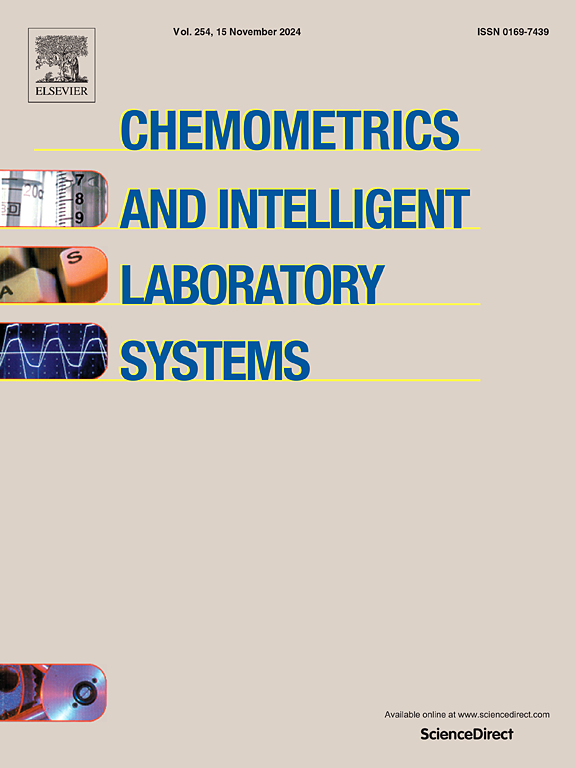Neural reinforcement-oriented hyperspectral image compression: Adaptive approaches for enhanced quality
IF 3.8
2区 化学
Q2 AUTOMATION & CONTROL SYSTEMS
Chemometrics and Intelligent Laboratory Systems
Pub Date : 2025-07-28
DOI:10.1016/j.chemolab.2025.105495
引用次数: 0
Abstract
Hyperspectral images (HSIs) typically contain hundreds or even thousands of bands that cover a wide range of wavelengths, each containing the material's spectral and spatial properties. New developments in remote sensing (RST) have enabled hyperspectral images (HSIs) with higher spectral and spatial resolution. However, these images' huge dimensionality and computational complexity provide difficulties for researchers. Broad spectral bands and redundancies contribute to huge dimensionality. In contrast, high spectral resolution, various sample ratios, and data dimensionality are the causes of computational complexity, which lowers precision and increases processing complexity. To address the challenge, a novel Neural Reinforcement with Adaptable Compression (NRAC) approach is proposed for dimension reduction in HSIs. The proposed technique involves initial computation of the mean for each instance in the input image and generating a matrix to select relevant bands from the HSI. After that, the dilation process takes place to mitigate intensity fluctuations of the HSI image. Then, to extract the spatial and spectral features, Convolutional CodeMapper is introduced for pixel value localization, thereby reducing computational overhead and overfitting. Thus, the NRAC approach accurately reconstructed the original HSI image and reduced the dimensionality issue. The evaluation utilized the Indian Pines, Jasper Ridge, Cuprite, and Pavia University Dataset, which attained high Peak Signal-to-Noise Ratio (PSNR), Mean Spectral Reconstruction Error (MSRE), Structural Similarity Index (SSIM), Feature Similarity Index (FSIM), and compression ratio metrics, demonstrating the efficacy of the proposed technique based on prior methods. The enhanced real-world implications of NRAC's capacity to interpret hyperspectral data include better remote sensing, agriculture, and environmental monitoring applications.
面向神经强化的高光谱图像压缩:提高质量的自适应方法
高光谱图像(hsi)通常包含数百甚至数千个波段,覆盖了很宽的波长范围,每个波段都包含材料的光谱和空间特性。遥感(RST)的新发展使高光谱图像(hsi)具有更高的光谱和空间分辨率。然而,这些图像的巨大维度和计算复杂性给研究人员带来了困难。宽频带和冗余构成了巨大的维度。相反,高光谱分辨率、不同采样比和数据维数是计算复杂度的原因,降低了精度,增加了处理复杂度。为了解决这一挑战,提出了一种新的神经增强自适应压缩(NRAC)方法用于hsi的降维。所提出的技术包括初始计算输入图像中每个实例的平均值,并生成从HSI中选择相关波段的矩阵。之后,膨胀过程发生,以减轻HSI图像的强度波动。然后,为了提取空间和光谱特征,引入卷积CodeMapper进行像素值定位,从而减少了计算开销和过拟合。因此,NRAC方法准确地重建了原始HSI图像,并降低了维数问题。利用Indian Pines, Jasper Ridge, Cuprite和Pavia University数据集进行评估,获得了较高的峰值信噪比(PSNR),平均光谱重建误差(MSRE),结构相似指数(SSIM),特征相似指数(FSIM)和压缩比指标,证明了基于先前方法的所提出技术的有效性。NRAC解释高光谱数据的能力增强了对现实世界的影响,包括更好的遥感、农业和环境监测应用。
本文章由计算机程序翻译,如有差异,请以英文原文为准。
求助全文
约1分钟内获得全文
求助全文
来源期刊
CiteScore
7.50
自引率
7.70%
发文量
169
审稿时长
3.4 months
期刊介绍:
Chemometrics and Intelligent Laboratory Systems publishes original research papers, short communications, reviews, tutorials and Original Software Publications reporting on development of novel statistical, mathematical, or computer techniques in Chemistry and related disciplines.
Chemometrics is the chemical discipline that uses mathematical and statistical methods to design or select optimal procedures and experiments, and to provide maximum chemical information by analysing chemical data.
The journal deals with the following topics:
1) Development of new statistical, mathematical and chemometrical methods for Chemistry and related fields (Environmental Chemistry, Biochemistry, Toxicology, System Biology, -Omics, etc.)
2) Novel applications of chemometrics to all branches of Chemistry and related fields (typical domains of interest are: process data analysis, experimental design, data mining, signal processing, supervised modelling, decision making, robust statistics, mixture analysis, multivariate calibration etc.) Routine applications of established chemometrical techniques will not be considered.
3) Development of new software that provides novel tools or truly advances the use of chemometrical methods.
4) Well characterized data sets to test performance for the new methods and software.
The journal complies with International Committee of Medical Journal Editors'' Uniform requirements for manuscripts.

 求助内容:
求助内容: 应助结果提醒方式:
应助结果提醒方式:


